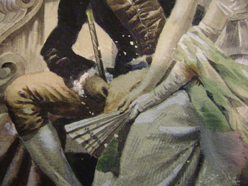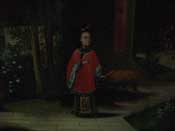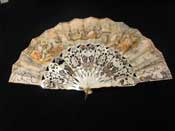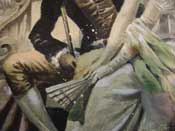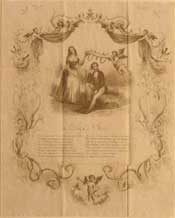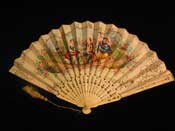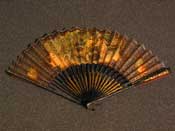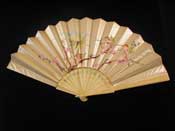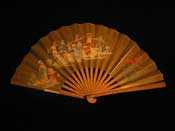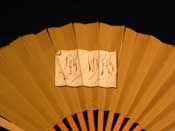|
||||||||||||||||||||
Fashion, Sophistication, and Myth Fashion and Sophistication Fans have many uses ranging from practical to symbolic. They can keep you cool in hot weather, serve in religious ritual, display sophistication and wealth, or function as an advertising medium. Perhaps the most enduring role of the handheld fan is as the symbol of wealth or royalty, which stretches as far back as the ancient civilizations of Egypt and Babylon and continues even to this day. 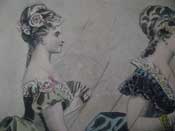 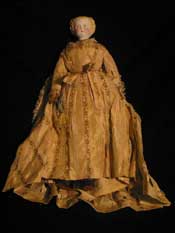
In western culture, fans were commonly associated with the sophistication of the upper classes. Those who aspired to high status could see fans in use in fashion magazines, such as Peterson’s Monthly Magazine here from 1875, which depicts elegant women extravagantly dressed in the height of fashion of that era. Even children’s dolls, paper and porcelain alike, are often shown grasping fans. The Influence of Japanese Culture
Leisure scenes were often painted on fans, reflecting the owner’s tastes and perhaps their chosen or hoped for lifestyle. This fan is the epitome of upper class "nonchalance." The presence of gondolas, masquerades masks, mandolins, distinct hairstyles, and the faint depiction of the lion of Saint Mark, the patron of Venice, all confirm the setting as Renaissance Venice (note that one woman is holding a fan). The positions of the figures reflect the “nonchalance” attitude, or sprezzatrua in Italian, taught by such courtiers as Baldassare Castiglione in contemporary Italy; he believed that the actions of a true upper class citizen should be conducted in a graceful and effortless manner. Courting and Romance
Myth and Folklore
This paper fan however, incorporates the elements of both folklore and mythology. The front of the fan depicts a scene of children dancing in a circle holding hands. They are singing “Ring Around the Rosie,” a children’s nursery rhyme that dates back to the Black Death of the European Middle Ages. The traditional interpretation of the rhyme, “Ring around the rosie/A pocket full of posies/Ashes, ashes/We all fall down” refers to the disease’s initial pinkish sores that form on the skin and the inevitability of death. William Newell, an American folklorist of the latter half of the 19th century, accounted for a unique version of this rhyme in New Bedford, Massachusetts that dates back to 1790. The version is as follows: “Ring a ring a rosie/A bottle full of posie/All the girls in our town/Ring for little Josie.” The back of this fan reads, “Las Ninfas,” which translates in both Spanish and Portuguese “The Nymphs.” New Bedford's whaling days brought many immigrants from the Azores to the city, where they became an important part of the community. This fan incorporates both the New Bedford history of Portuguese culture as well as the presence of mythology that dates back to colonial times. |
|
|
© 2009 The New Bedford Whaling Museum, All Rights Reserved 18 Johnny Cake Hill, New Bedford, Massachusetts 02740 508.997.0046 |
